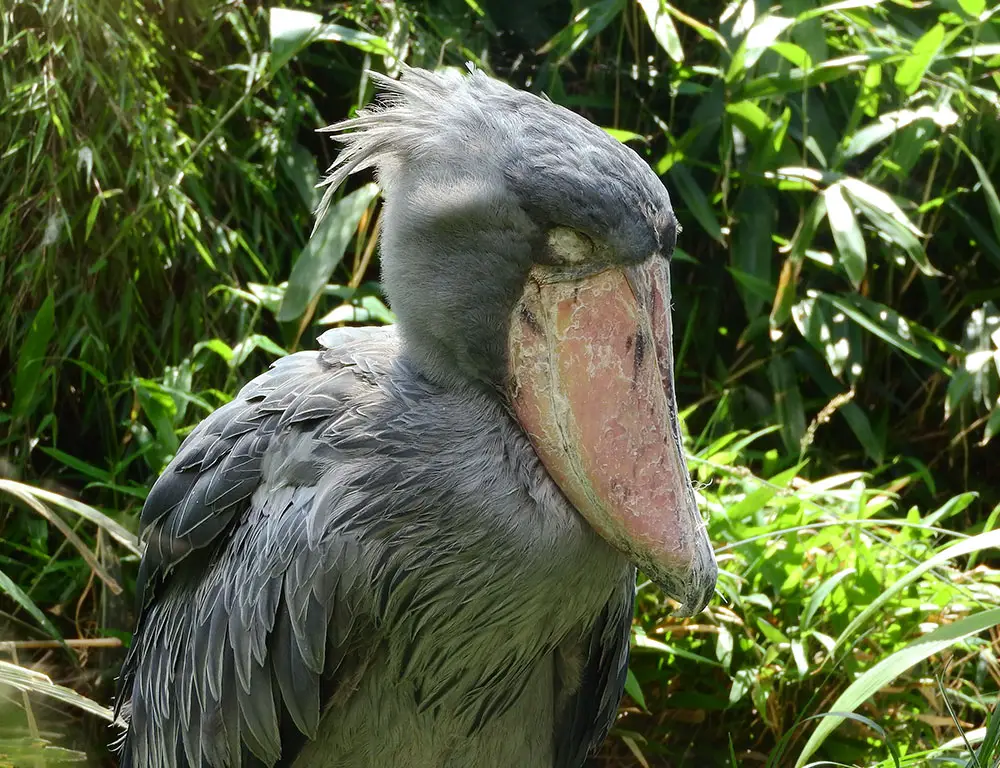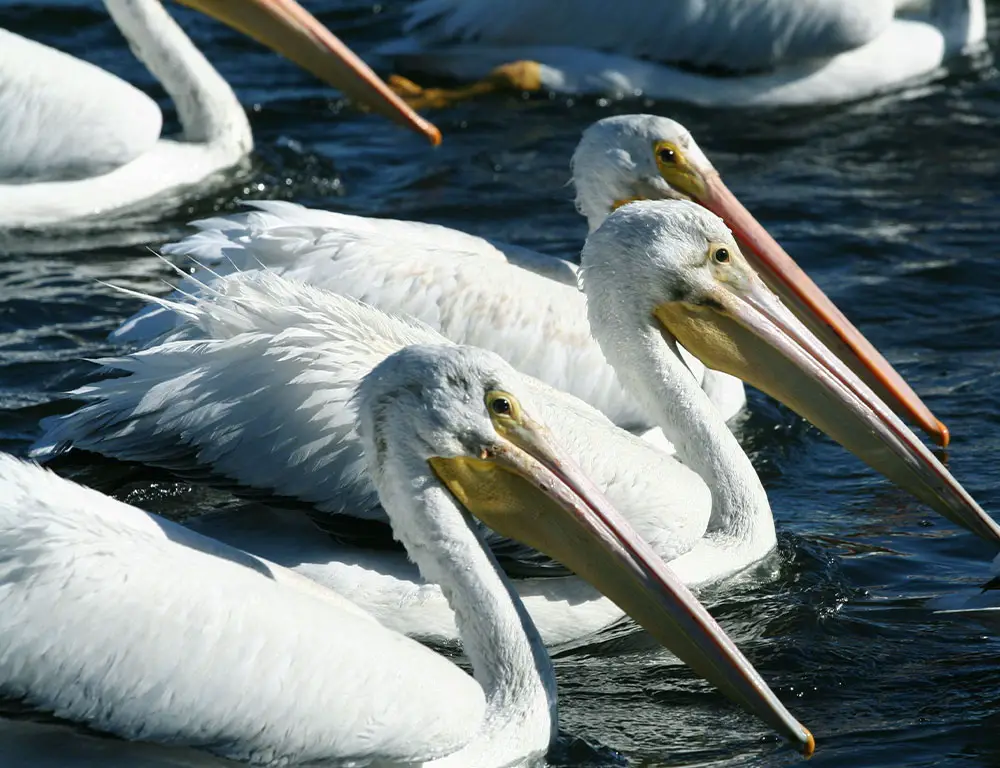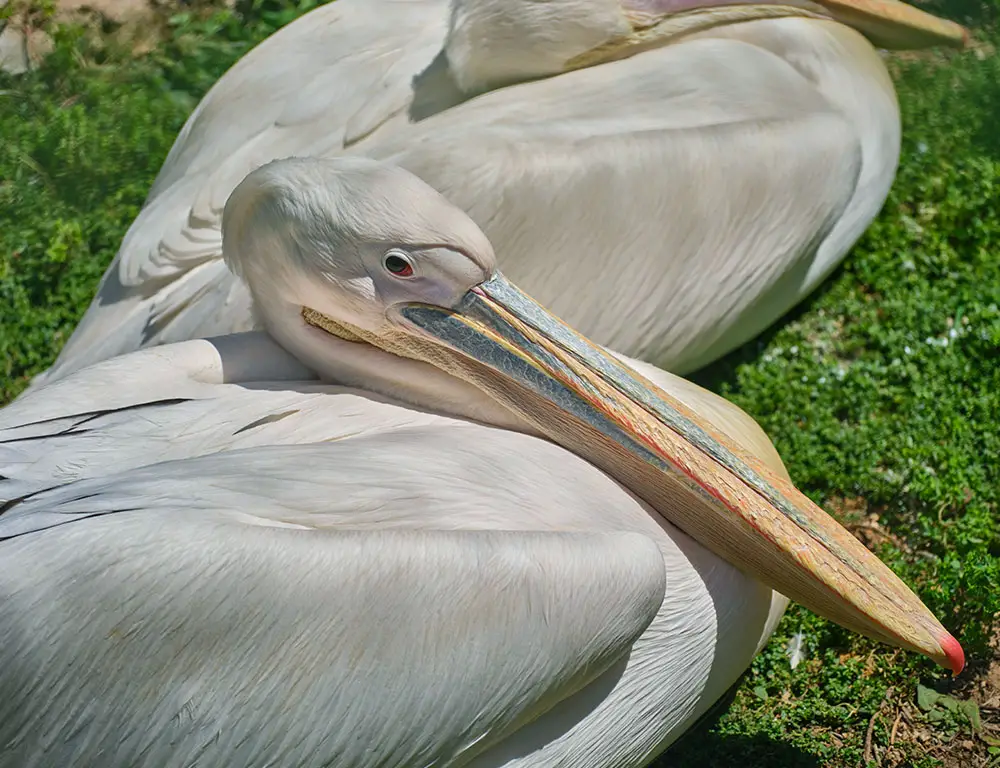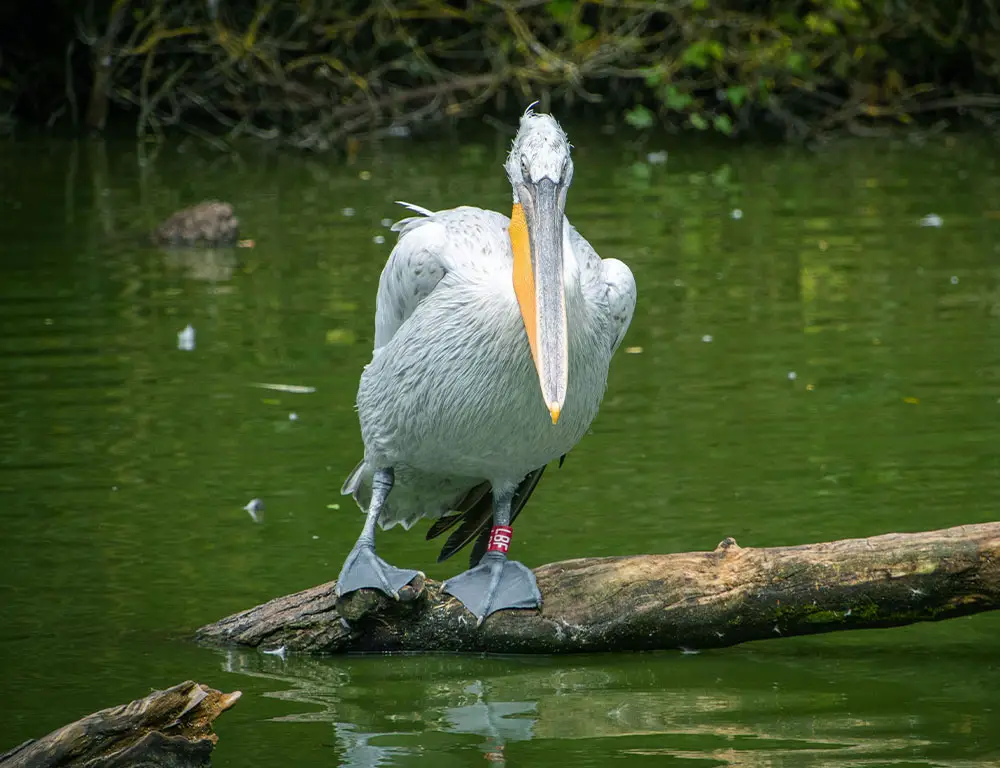The Pelecaniformes is a diverse order of birds renowned for their elegance in flight and unique feeding behaviors.
Pelecaniformes encompass a fascinating array of avian species, from the iconic pelicans with impressive throat pouches to the sleek, dagger-billed tropicbirds.
Derived from the Greek word “pelekan,” meaning pelican, this order comprises approximately 66 species, each with distinct characteristics and ecological niches.
Found across all continents except Antarctica, these birds inhabit various habitats, from coastal shores to inland waters and remote islands. What sets Pelecaniformes apart is their remarkable adaptability and specialized feeding techniques.
Whether plunging headfirst into the water to scoop up fish or perching precariously on cliffs to snatch prey, these birds showcase unparalleled agility and precision in their hunting strategies.
Join us as we delve deeper into the enchanting world of Pelecaniformes, uncovering the secrets of their evolutionary success.

Identifying Characteristics of the Pelecaniformes
Pelecaniformes, an order of birds encompassing species like pelicans, herons, and frigatebirds, are distinguished by several key characteristics.
These traits, from physical features to behavioral patterns, serve as hallmarks of this diverse avian group.
Size
Pelecaniformes encompass a range of sizes, with all species classified as relatively large birds.
They measure from approximately 40 cm (16 inches) in the white-tailed tropic bird to an impressive 1.8 meters (6 feet) in the Dalmatian pelican.
This size diversity reflects their adaptation to varied ecological niches and habitats.
Long Neck and Bill
One of the defining features of Pelecaniformes is their long necks and bills. These adaptations are particularly evident in species like herons, egrets, and bitterns, which use their extended necks and bills to hunt for prey in shallow waters.
Large Wingspan
Many Pelecaniformes possess large wingspans, enabling them to soar effortlessly over bodies of water while searching for food.
This characteristic is especially pronounced in albatrosses and frigatebirds, known for their impressive aerial capabilities.
Webbed Feet
Webbed feet are standard among Pelecaniformes and are exceptionally well-developed in aquatic or semi-aquatic species, such as pelicans and gannets.
These specialized feet facilitate swimming and diving, allowing birds to navigate water easily.
Plumage Variation
Pelecaniformes exhibit diverse plumage, typically blackish with variations. Some feature white underparts, while others sport predominantly gray tones.
Breeding individuals may display ornamental crests or patches of white, adding flair to their appearance.
Broad wings aid in flight, complemented by long, stiff tails characteristic of this medium to large-sized bird order.
Feeding Strategies
Pelecaniformes employ various feeding strategies depending on their species and habitat. For example, pelicans are known for their spectacular plunge-diving technique, while herons use stealth and patience to ambush their prey.
Frigatebirds are adept at stealing food from other seabirds, while gannets execute high-speed dives to catch fish.
Courtship Displays
Courtship displays are standard among Pelecaniformes and often involve elaborate rituals designed to attract mates. These displays can include aerial acrobatics, elaborate plumage displays, and vocalizations, with each species exhibiting unique courtship behaviors.
Parental Care
Pelecaniformes are generally attentive parents, with both males and females participating in egg incubation and young rearing.
In species like pelicans, parents regurgitate food to feed their chicks, while in herons, both parents take turns hunting for food to feed their offspring.
Taxonomy, Distribution, and Breeding Habits of the Pelecaniformes

Now, let’s uncover the taxonomy of Pelecaniformes, explore their range across different continents, and delve into the captivating intricacies of their breeding behaviors.
Taxonomy of Pelecaniformes
| Taxonomic Level | Classification |
| Kingdom | Animalia |
| Phylum | Chordata |
| Class | Aves |
| Order | Pelecaniformes |
| Families | Ardeidae, Threskiornithidae, Pelecanidae, Sulidae, Phaethontidae, Fregatidae |
Range Map
Pelecaniformes have a global distribution, inhabiting diverse habitats ranging from coastal regions and wetlands to open ocean environments. They can be found on every continent except Antarctica, with some species being more widespread than others.
Food Habits
Pelecaniformes exhibit diverse feeding habits, reflecting their adaptation to different environments. Common feeding strategies include plunge-diving, surface skimming, aerial pursuit, and scavenging.
Their diet primarily consists of fish, crustaceans, amphibians, reptiles, and occasionally small mammals or birds.
Nesting Habits
| Species | Nest Type | Nest Location |
| Pelicans | Platform nest | Ground or trees |
| Herons | Platform nest | Trees, shrubs, or reeds |
| Ibises | Platform nest | Trees or reedbeds |
| Gannets | Cliff nest | Cliffs or rocky islands |
| Frigatebirds | Platform nest | Trees or shrubs |
Breeding
Breeding habits among Pelecaniformes vary depending on the species and their ecological niche. Colonial nesting is common among many species, with birds congregating in large colonies to breed and raise their young.
Breeding seasons are often timed to coincide with periods of peak food availability, with courtship displays and mate selection occurring before nesting.
Conservation Status
Pelecaniformes face varied conservation challenges. While few species are globally threatened, localized extinctions occur due to habitat loss and pollution, particularly among island and inland populations.
Conservation efforts target preserving critical habitats and mitigating pollution to safeguard these birds. Continued monitoring and habitat protection are crucial to prevent further declines and ensure the survival of Pelecaniformes in their diverse ecosystems.
Migration Patterns
Migration is a remarkable aspect of the life cycle of many Pelecaniformes, with species undertaking extensive journeys between breeding and wintering grounds.
The migration patterns of these birds are influenced by factors such as food availability, weather conditions, and breeding requirements.
For instance, species like the Arctic tern undertake one of the longest migrations in the animal kingdom, traveling from their breeding grounds in the Arctic to their wintering grounds in the Antarctic, covering thousands of miles between nearby habitats.
Social Behavior
Social behavior plays a significant role in the lives of many Pelecaniformes, with various species exhibiting complex interactions and social structures.
Colonial nesting is a prominent feature among several species, with birds congregating in large colonies to breed and raise their young.
These colonies can vary from small groups to large gatherings comprising thousands of individuals.
What Are the Common Diseases and Treatments of the Pelecaniformes?

Like all birds, Pelecaniformes are susceptible to various diseases and health issues affecting their well-being.
Understanding these common ailments and available treatments is essential for caring for and conserving these magnificent birds.
Avian Botulism
Avian botulism is a bacterial disease caused by Clostridium botulinum toxin, often found in decaying organic matter in water. Pelecaniformes, particularly those inhabiting wetland environments, are at risk of contracting this disease.
Symptoms include weakness, paralysis, and difficulty breathing. Treatment involves supportive care, including fluid therapy and administration of antitoxins.
Aspergillosis
Aspergillosis is a fungal infection caused by Aspergillus spp., commonly found in damp environments. Pelecaniformes may inhale fungal spores, leading to respiratory distress, lethargy, and loss of appetite.
Treatment typically involves antifungal medications administered orally or through nebulization and supportive care to improve respiratory function.
Lead Poisoning
Lead poisoning can occur in Pelecaniformes that ingest lead-containing fishing tackle or contaminated prey. Symptoms include weakness, neurological signs, and digestive disturbances.
Treatment involves chelation therapy to remove lead from the bloodstream, along with supportive care to address associated complications.
Trauma
Pelecaniformes may suffer injuries from collisions with human-made structures, entanglement in fishing gear, or predation attempts.
Trauma can result in fractures, wounds, or internal injuries. Treatment varies depending on the severity of the injury but may include wound management, splinting or surgery for fractures, and rehabilitation to regain strength and mobility.
Parasitic Infections
Pelecaniformes can harbor various parasites, including internal parasites like worms and external parasites like mites and lice. Parasitic infections can cause weight loss, weakness, and irritation.
Treatment involves deworming medications for internal parasites and topical or systemic treatments for external parasites.
Preventive Measures
Preventive measures are crucial for maintaining the health of Pelecaniformes. These include regular veterinary check-ups, vaccination against common avian diseases, providing a clean and hygienic environment, and implementing biosecurity measures to prevent the spread of infectious agents.
6 Fun Facts About the Pelecaniformes

Pelecaniformes, a diverse order of birds including pelicans, herons, and frigatebirds, possess fascinating traits and behaviors.
Here are six fun facts about these charismatic avians:
1. Gular Pouch Expansion
Pelicans, known for their iconic gular pouches, can stretch them to incredible sizes, allowing them to scoop up large quantities of fish in a single gulp.
This adaptation makes pelicans highly efficient hunters, effortlessly capturing prey with minimal effort.
2. Frigatebird Piracy
Magnificent frigatebirds have earned the nickname “pirates of the sky” due to their remarkable ability to steal food from other seabirds. Using their impressive aerial agility, frigatebirds harass and intimidate other birds into regurgitating their catch, which the frigatebirds then snatch in mid-air.
3. Herons’ Stealthy Hunting
Herons are masterful hunters, employing stealth and patience to stalk their prey in shallow waters. With their long, dagger-like bills and lightning-fast strikes, herons can swiftly snatch fish, frogs, and other small prey without alerting their unsuspecting victims.
4. Tropicbirds’ Aerial Acrobatics
Tropicbirds are renowned for their stunning aerial displays, characterized by graceful glides, swoops, and loops. Male tropicbirds perform elaborate aerial dances during courtship to attract females, showcasing their agility and prowess as flyers.
5. Booby Feet
Blue-footed boobies, named for their distinctive bright blue feet, use their colorful appendages in courtship displays. Males strut and dance, displaying their colorful feet to potential mates as a sign of fitness and genetic quality.
6. Cormorant Diving Adaptations
Cormorants are uniquely adapted for underwater hunting, with streamlined bodies and dense plumage that reduce buoyancy.
Their powerful legs and webbed feet propel them underwater with remarkable speed and agility, allowing them to pursue and capture fish easily.
FAQs
What is the scientific classification of Pelecaniformes?
Pelecaniformes belong to the class Aves and include families such as Ardeidae (herons and egrets), Threskiornithidae (ibises and spoonbills), Pelecanidae (pelicans), Sulidae (gannets and boobies), Phaethontidae (tropicbirds), and Fregatidae (frigatebirds).
Where can Pelecaniformes be found?
Pelecaniformes are found worldwide, inhabiting diverse habitats such as coastal areas, wetlands, rivers, lakes, and open ocean environments. They are present on every continent except Antarctica.
What do Pelecaniformes eat?
Pelecaniformes’ diets vary depending on the species and habitat, but they primarily feed on fish, crustaceans, amphibians, reptiles, and occasionally small mammals or birds.
Their feeding strategies include plunge-diving, surface skimming, aerial pursuit, and scavenging.
How do Pelecaniformes reproduce?
Pelecaniformes exhibit diverse breeding habits, with many species engaging in colonial nesting, where they gather in large colonies to breed and raise their young.
Breeding seasons are often timed to coincide with periods of peak food availability, and courtship displays play a significant role in mate selection.
What are the conservation concerns for Pelecaniformes?
Pelecaniformes face various threats to their populations, including habitat loss, pollution, overfishing, and disturbance of nesting sites. Several species are listed as threatened or endangered due to these factors, highlighting the need for conservation efforts.
Conclusion
Pelecaniformes represent a diverse and fascinating group of birds characterized by their medium to large size, distinctive plumage variations, and specialized ecological niches.
While some species face threats due to habitat loss and pollution, concerted conservation efforts are underway to mitigate these challenges and ensure their survival.
The ornamental crests and white patches displayed during breeding seasons add to their allure, captivating the interest of bird enthusiasts and researchers alike.
Pelecaniformes play essential roles in their ecosystems as predators, scavengers, and indicators of environmental health.
Through continued monitoring, habitat protection, and public awareness, we can strive to safeguard these remarkable birds and the ecosystems they inhabit.
Preserving the diversity of Pelecaniformes not only contributes to the conservation of avian biodiversity but also enriches our understanding of the natural world and underscores the importance of sustainable environmental stewardship.